From Jun 7th till Jun 11th Pannonian Challenge XVIII-2017 was held, one of the few festivals in the world dedicated to extreme sports such as BMX, skate, inline and MTB competitions. There are also numerous concerts during the festival which makes a perfect combination of sports and music. Festival attracts many lovers of extreme sports, athletes, citizens od Osijek, visitors from other European and world countries, both young and old.
MeshPoint team was proud to provide the whole network setup for the entire event – from public Wi-Fi (otvorenamreza.org) for all attendees and private Wi-Fi for Management, sport judges, press corner, staff and for point of sale.
 We have been partners with Pannonian challenge for last 6 years, and this is where we have tested and improved our mesh technology. Each year thousands of people come to this event because of that we had opportunity to test our technology in real world conditions, and MeshPoint has been proven to work with hundreds of clients connected at the same time. Thus when we decided to act during humanitarian crisis we were sure that our technology can work in most demanding conditions.
We have been partners with Pannonian challenge for last 6 years, and this is where we have tested and improved our mesh technology. Each year thousands of people come to this event because of that we had opportunity to test our technology in real world conditions, and MeshPoint has been proven to work with hundreds of clients connected at the same time. Thus when we decided to act during humanitarian crisis we were sure that our technology can work in most demanding conditions.
I will go through every step in the process of planning and realization. Let’s start with obstacles in planning the network. The skate park is located on the left side of river Drava in Osijek right by SRC Copacabana. The network infrastructure there was broken and in disrepair so the first and foremost thing for us to do was bringing high speed Internet to the location.
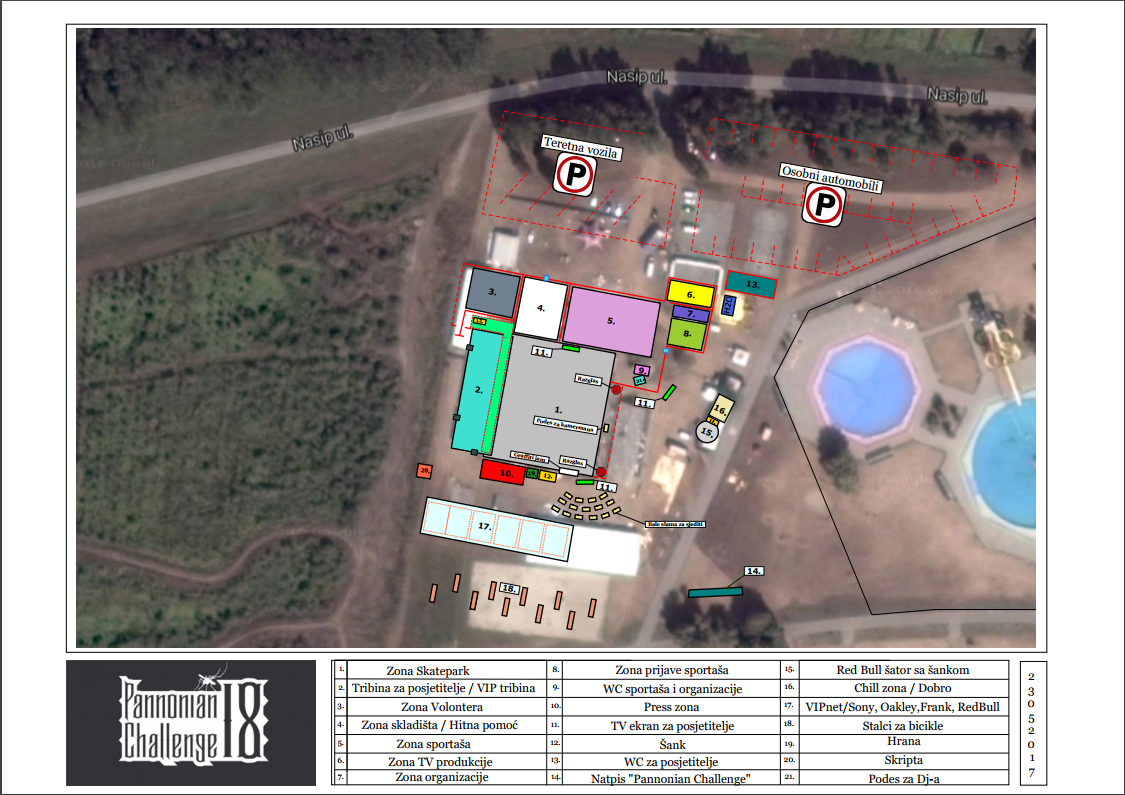
space that we had to cover with Wi-Fi
We used Ubiquiti LiteBeam AC 23 for point to point links from the location of one of our backhaul nodes where we have 200/100Mbps fiber optics connection. From backhaul location there was no line of sight to where the event took place. Thus, after some link planning we made two point to point links – the first leading from our backhaul site to one high apartment building and the second from that high apartment building to the skate park. That was our primary link. For backup link we used another 80/80Mbps link that was provided by event sponsor - Vipnet telecom.
All backhaul links were installed couple of weeks before the event so we had time to test the reliability of both links. May I add I was very satisfied with the results for both links were rock stable and operating at their full capacities. When the backhaul networks were set and tested we started first of probably 1000+ iterations of device physical and logical plans (placement and address and bandwidth planning). That is one off the best parts of Meshpoint, i.e. you really don’t have to do anything special yourself - set it, (give it power and Internet) and forget it.
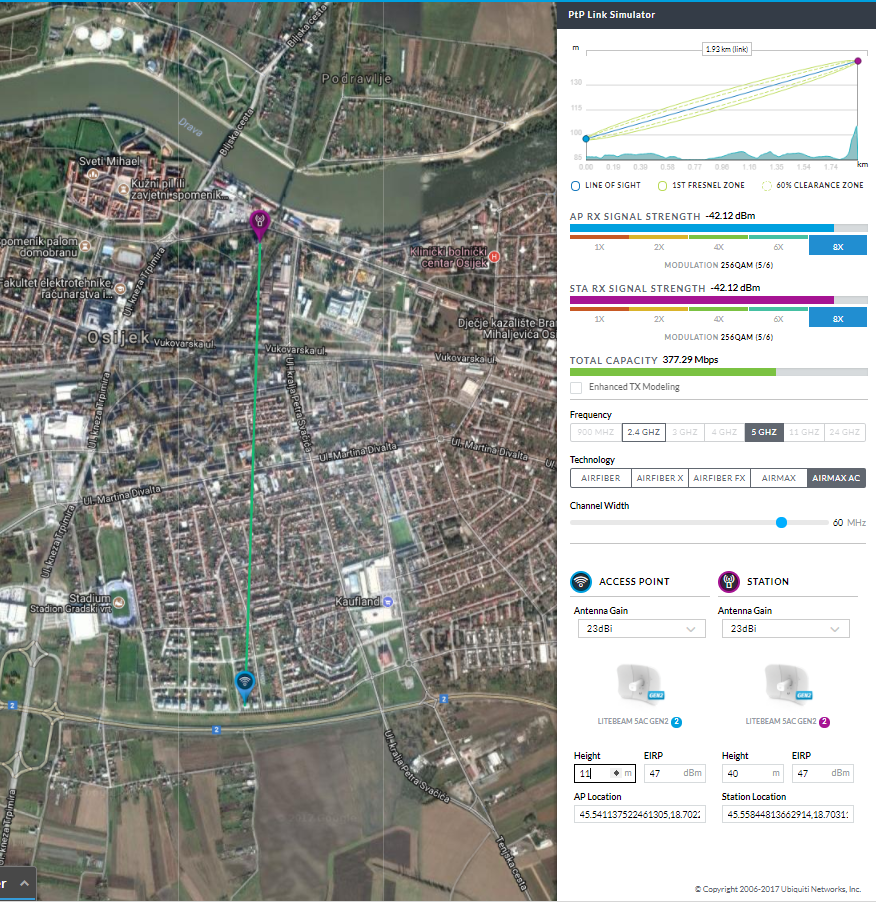
Wireless link from our backhaul location to the apartment building (all specs are correct )

Wireless link from the apartment building to the event location

Backhaul links (top: Vipnet 80/80Mbits, bottom: Otvorena mreza 200/100Mbits)
For public network we deployed 5 Meshpoints that were strategically placed in the field and connected via 2 Mikrotik RB260GSP POE switches to EdgeRouter X SFP router flashed with our open source firmware which is using our primary link to the internet (200/100). Router was used for monitoring the traffic, throughput and number of clients.
Red dots indicate final Meshpoint positions after the stage of the event was set up
Our volunteers promoting Meshpoint at the event
As for the private network, we used a couple of Unifi AC Mesh devices and 2 Unifi AP AC Lite (also monitored by our Unifi Controller server) connected to our private core switch Mikrotik CRS112-8G-4S-IN which was trunked to Mikrotik 3011-UiAS-RM (load balancing + failover and main DHCP server for the network) and to Vipnet provided Cisco 2901 Router.
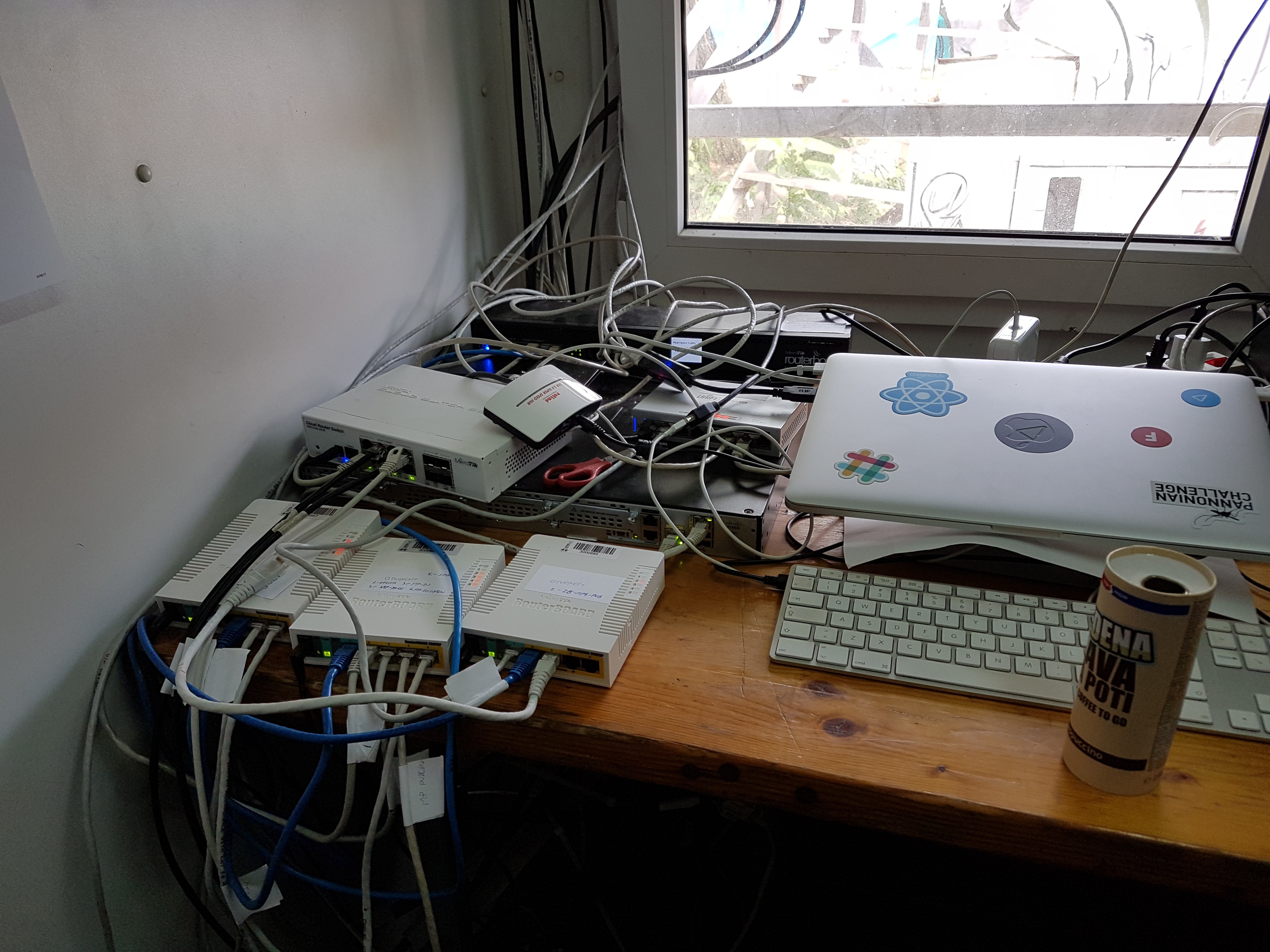
Network setup after all the changes and additions :)
Now that you know the equipment and specs of the network, let’s talk statistics by day and the end result.
Day 1. we were all nervous and anxious to see the network perform. That first day we were stuck to our screens monitoring performance and hoping that it works both because of the event itself and because this was our biggest deployment of MeshPoints. By the end of the day, ones the results were in, we saw that network was stable, there wasn’t even a hiccup and MeshPoints did their job perfectly. Most number of concurrent connections were around 230, with a capacity for more. By the end of the first day we saw around 6000 unique clients.
As you can imagine day two went exactly the same. Backhaul stable, local wired network stable, Wi-Fi network stable, clients satisfied and a lot of pictures/videos uploaded to Facebook, Instagram, and other parts of network and social media. The trend of rock solid Wi-Fi network at the event continued and by the end, i.e. at the peak there were more than 500 people connected and using the network at the same time. Overall, over 6000 clients used our services in a 5 day period.
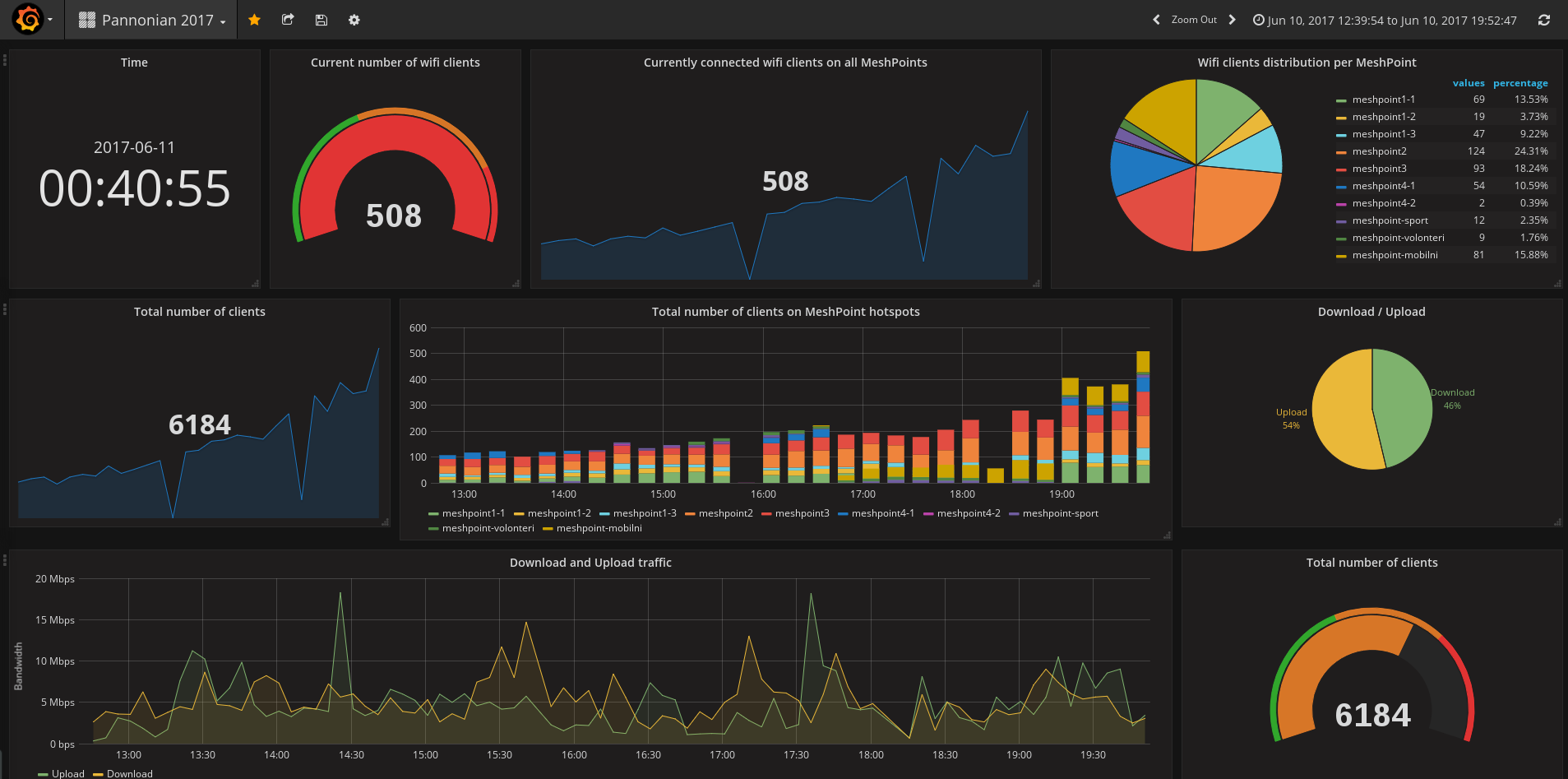
Final day statistics
Of course it wasn’t all roses, we had some problems but it was mostly during the week before when we were physically setting up the network. 90% off all problems had to do with broken cat5e cables. Also, at one time when I freaked out that nothing was working and later found out it was our local power company putting stronger power lines for the event. Needless to say that we got an UPS in the NOC and after that it was all smooth sailing.
Fixing some old broken cables and putting new lines
This was also a great opportunity to develop our first dashboard so we could track all the statistics necessary to monitor and maintain the network during the festival, but also to further plan and 'fine-tune' our services for big outdoor events.
All of our pictures from Pannonian Challenge 18 you can find on following links:
https://photos.app.goo.gl/0Yxw2n6eLUCKqvDj1
https://photos.app.goo.gl/gTmtvbG1I0RT7oeg2
I must say a big thank you to all the volunteers at the event and the whole organizational team and my colleagues form Otvorena mreza for making the whole thing possible. We can’t wait till next year to do all of this all over again but Bigger, Better, Stronger!!!!!!!!!!!!
 David Blažević
David Blažević

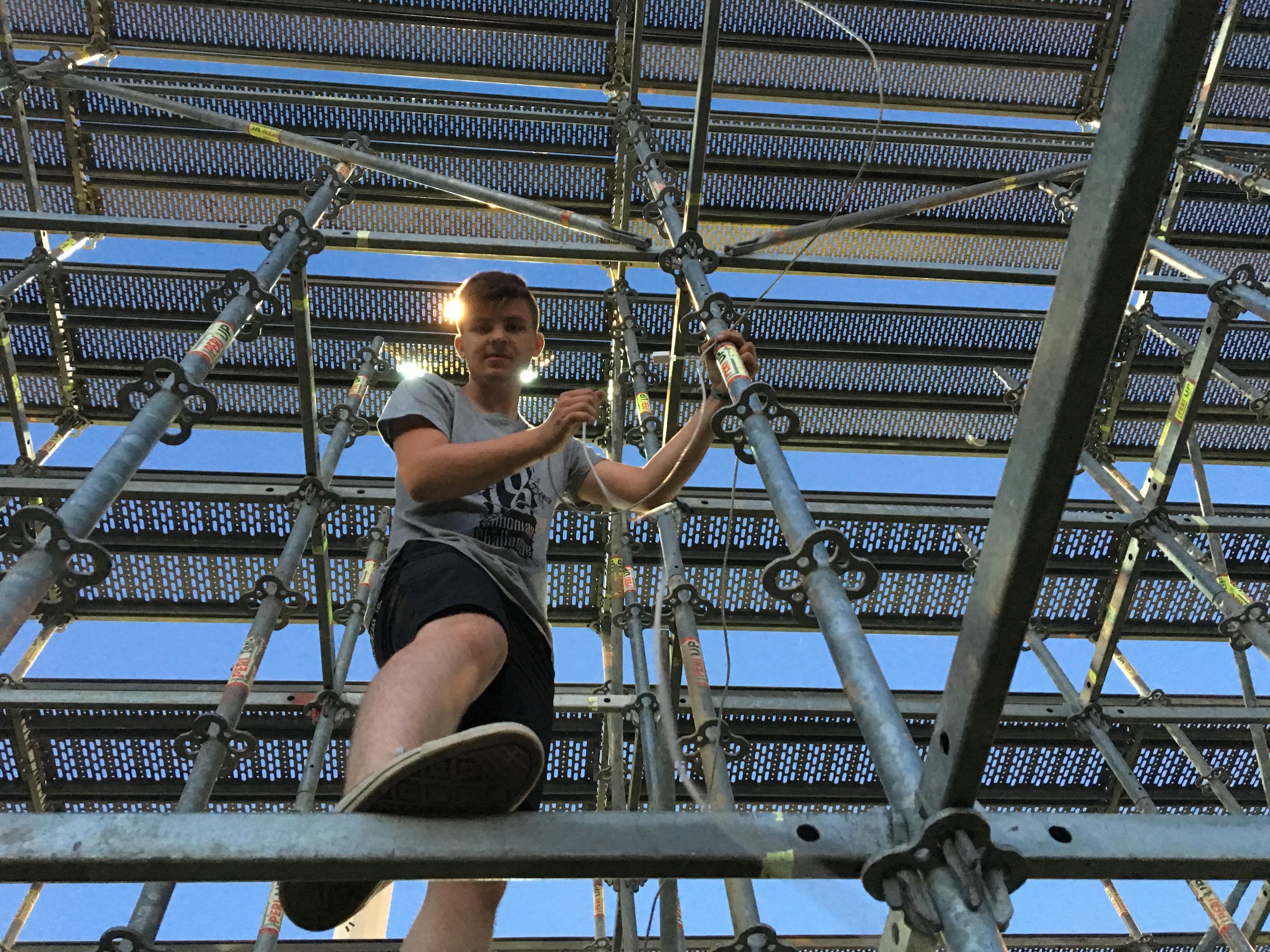
Discussions
Become a Hackaday.io Member
Create an account to leave a comment. Already have an account? Log In.